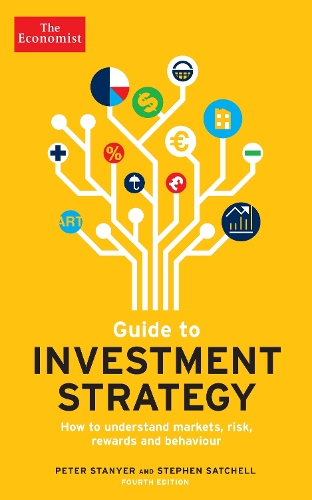
The Economist Guide To Investment Strategy 4th Edition: How to understand markets, risk, rewards and behaviour
(Paperback, Main)
Publishing Details
The Economist Guide To Investment Strategy 4th Edition: How to understand markets, risk, rewards and behaviour
By (Author) Peter Stanyer
By (author) Stephen Satchell
Profile Books Ltd
Economist Books
23rd May 2018
26th April 2018
Main
United Kingdom
Classifications
General
Non Fiction
Investment and securities
332.6
Physical Properties
Paperback
352
Width 134mm, Height 216mm, Spine 30mm
340g
Description
The classic guide for the individual investor, The Economist Guide to Investment Strategy sets out the basic - and the not-so-basic - principles for putting your wealth to work. It looks at risk, pointing out the hazards for those who wish to explore a variety of investment approaches. It also teaches the importance of sophisticated self-knowledge in finance, distilling insights from behavioural analysis as well as the principles of traditional finance. It highlights how habitual patterns of decision-making can lead any of us into costly mistakes, and it stresses how markets are most dangerous when they appear to be most rewarding.
This fourth edition includes new material on private investment and non-standard asset classes - art, wine, collectibles and the like - helping readers to navigate those areas in which prudence meets passion.
Reviews
Successfully translates sophisticated academic thinking into simple, intuitive principles that can be used by both individual and institutional investors. These principles are all the more valuable as Stanyer applies them to the full range of asset classes and investment strategies available today. -- John Campbell * Professor of Economics, Harvard University *
A book that provides welcome light and insight in a world in which the global financial crisis has highlighted the importance of financial education and literacy. -- Steve Satchell * Fellow, Trinity College Cambridge *
Author Bio
Peter Stanyer is economist and strategist at a London-based private wealth manager. He was previously chief investment officer of a US-based investment firm, a managing director at Merrill Lynch and investment director of the UK's Railways Rail Pension Fund. He has also worked as an economist for the Bank of England and the IMF, and when at Cambridge University he won the Adam Smith prize for economics.
